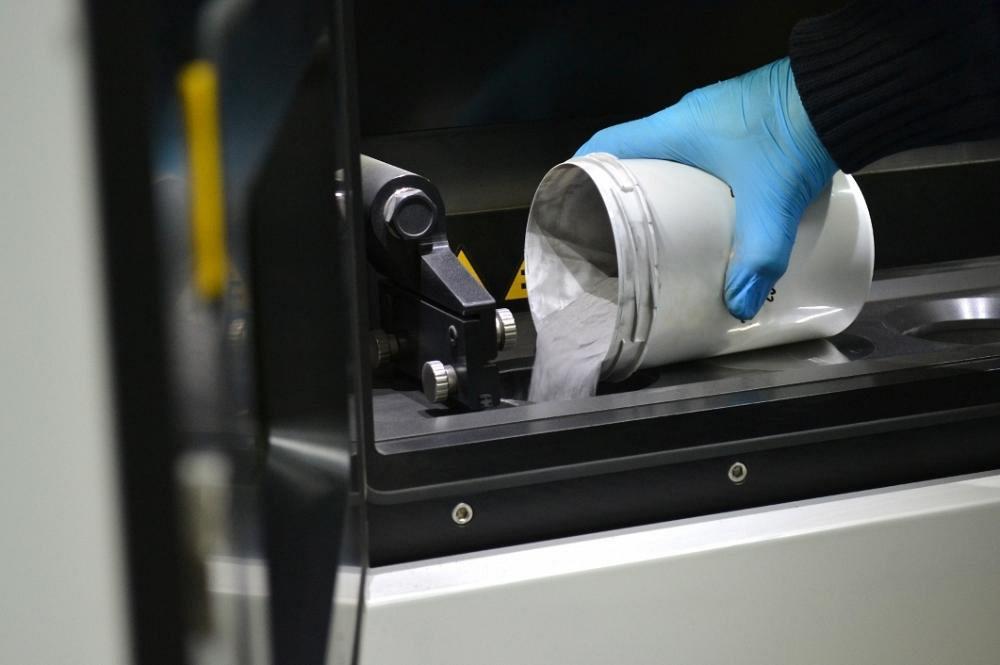- FMA
- The Fabricator
- FABTECH
- Canadian Metalworking
Our Publications
Categories
- Additive Manufacturing
- Aluminum Welding
- Arc Welding
- Assembly and Joining
- Automation and Robotics
- Bending and Forming
- Consumables
- Cutting and Weld Prep
- Electric Vehicles
- En Español
- Finishing
- Hydroforming
- Laser Cutting
- Laser Welding
- Machining
- Manufacturing Software
- Materials Handling
- Metals/Materials
- Oxyfuel Cutting
- Plasma Cutting
- Power Tools
- Punching and Other Holemaking
- Roll Forming
- Safety
- Sawing
- Shearing
- Shop Management
- Testing and Measuring
- Tube and Pipe Fabrication
- Tube and Pipe Production
- Waterjet Cutting
Industry Directory
Webcasts
Podcasts
FAB 40
Advertise
Subscribe
Account Login
Search
Are all the new materials being developed for additive manufacturing necessary?
Hundreds, possibly thousands, of new materials have been developed recently for 3D printing, many for specific applications and machines
- By Kip Hanson
- September 3, 2019
Call me ignorant. Call me uninformed. Call me whatever you like—just don’t call me late to dinner. Seriously, though, I didn’t realize until lately how many frigging materials there are out there for 3D printing.
While talking recently to Stratasys Direct Manufacturing, I was told it has 45 different additive materials on hand, not counting those used on the machining and injection molding side of the business. A little post-interview Googling brought me to parent company Stratasys’ website, which lists—among other polymers—five different types of ABS, three Ultems, four nylons, a handful of high-temperature and biocompatible polymers, and something called Tango (a rubber substitute).
Competitor 3D Systems boasts well over 100 distinct metals and polymers, all of them seemingly proprietary. Relative newcomer Carbon 3D offers cyanate ester, elastomeric polyurethane, and a whole bunch of stuff for dental prostheses and surgical tools, and Markforged advertises a handful of carbon-fiber composites as well as their big brother, Kevlar, the stuff of bulletproof vests and, sadly, school kids’ backpacks.
Anyway, that’s just the tip of the iceberg. Check out BASF, Oerlikon, Arkema, Sandvik and other billion-dollar conglomerates inventing brand-new, 3D-printable thermoplastics and resins, metals, composites, and filaments seemingly every day.
Each has its own unique material properties and characteristics, and are often designed for a specific use, like kayak paddles and roller-skate wheels, or a specific type or brand of 3D-printer. So not only has 3D printing drastically increased part complexity (the thing that’s supposed to be free), but there are now hundreds, possibly thousands, of materials from which a designer can choose.
What’s going to happen when people start experimenting? Mixing different FDM powders, for instance, or using multiple nozzles to spray copper and Inconel onto the same workpiece, or maybe tossing a bit of ceramic into their next build to see if they can make a more heat-resistant mousetrap? Who knows?
I’m no material scientist, but I have to wonder if all this is really necessary. I asked in one of my ranting blogs a few weeks ago if anyone remembers when the parts in your toolbox were made of 316 stainless, 1018 steel, 6061-T6 aluminum, or titanium? Manufacturing was much simpler back then.
And don’t suggest that there’s a bright side to all this, namely that all of these newfangled materials are going to be 3D-printed, thereby eliminating the need for endless carbide grades, feeds, speeds, depths of cut, and machining strategies.
Granted, a fair percentage of all 3D-printed polymer parts require little more than some tumbling or bead-blasting before heading off to the shipping dock, but metals? Practically every additively manufactured metal product requires some amount of machining, so you can bet there’s going to be some serious head-scratching as machine shops everywhere move into this bold new how-the-heck-are-we-going-to-cut-this-stuff world.
Me? I’m happy to write about it and leave the machining to someone else.
About the Author

Kip Hanson
About the Publication
- Podcasting
- Podcast:
- The Fabricator Podcast
- Published:
- 04/16/2024
- Running Time:
- 63:29
In this episode of The Fabricator Podcast, Caleb Chamberlain, co-founder and CEO of OSH Cut, discusses his company’s...
- Trending Articles
- Industry Events
16th Annual Safety Conference
- April 30 - May 1, 2024
- Elgin,
Pipe and Tube Conference
- May 21 - 22, 2024
- Omaha, NE
World-Class Roll Forming Workshop
- June 5 - 6, 2024
- Louisville, KY
Advanced Laser Application Workshop
- June 25 - 27, 2024
- Novi, MI



























